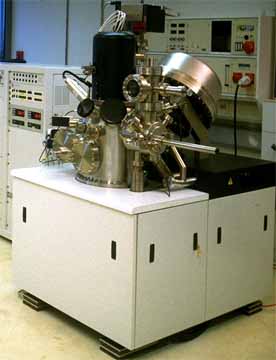Instrumentation and Analytical Services
Introduction to various services and instrumentation of our group is missing.Scanning Auger Microscope - Focused Ion Beam
A state of the art high resolution Scanning Auger system (VG microlab 310F) has been equipped with a focussed ion beam column, permitting micro-machining of samples in situ. This can be used for a variety of purposes, e.g. the analyses of thick layers in the micrometer range or of 3-dimensional micro- and nano-structures. The system is available for service analyses.

ESCA - Electron Spectroscopy for Chemical Analysis
We perform angle resolved ESCA in order to get information on the electron transport in solids. Therefore we compare the experimental results with simulations using newly developed SESSA code. Furthermore we use these method to elucidate the composition and structure of thin films. ESCA is also capable to distinguish between differently bound elements eg. determine the oxidation state of an element, which is essential for this kind of research.
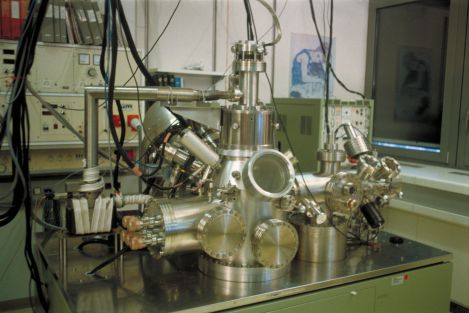
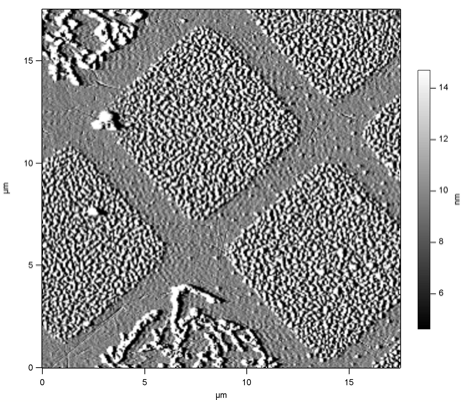
Atomic Force Microscope
Our atomic force microscope (MFP 3D, Asylum Research, CA) is utilized to investigate transparent as well as opaque samples from the micro- down to the nanoscale in any translucent fluid or gaseous environment, e.g. in air, solvents, buffer solutions. Besides topography, hardness and viscoelasticity, single molecule pulling experiments can be performed with unprecedented resolution. This versatile instrument is used for tribological and biophysical experiments (monomolecular lubricant layers, nanoindentation, biogenic glass, natural adhesives) as well as investigation of nanostructures induced via ion bombardment.
Sample Preparation
Our main sample treatment facility is a tubular furnace for heating
samples in various gases at temperatures up to 1100 °C, which
is also equipped with an R.F. plasma generator.
Other available sample preparation methods include high precision
cutting, polishing, ball cratering and ultrasonic surface cleaning.

High temperature rf reactor
An electrodeless rf discharge can be sustained in a tubular fused silica reactor situated within an electric furnace with a temperature of up to 1100 °C. Samples can be treated with various process gas mixtures either without or with plasma activation.
Supersonic Vacuum Arc Jet
A plasma gun was developed which allows a supersonic expansion of the plasma plume into a vacuum vessel. It can be used for deposition experiments as well as plasma chemical investigations.

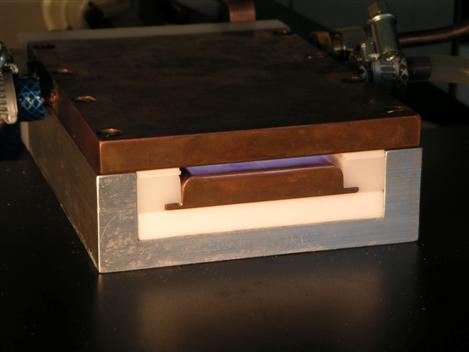
Atmospheric Pressure Plasma Jet
We generated an Atmospheric Pressure Plasma Jet in a capacitive radio-frequency (RF) plasma source, that results in a stable glow-like discharge with a rather low gas kinetic energy. There for we research stability conditions and behaviour of the glow-like discharges for various gas mixtures, different geometrical and electrical performances.
Mass spectrometry
The ultra high vacuum quadrupole mass spectrometers are used for a variety of analytical tasks, including process monitoring and outgasing. A variety of pressure reduction and rapid sampling gas inlets are available. The mass range is up to 511 atomic mass units (amu).
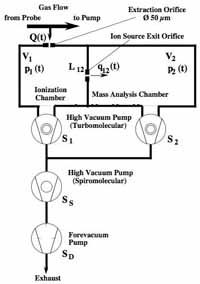
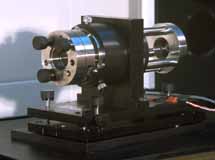
Optical Spectroscopy
The equipment available permits optical emission spectroscopy in the UV, visible and near infrared ranges from 185 to 1100 nm. A spectrometer with CCD camera permits to record the whole range in one shot, while a classical spectrograph with cooled photo multiplier has a resolution better than 0,02 nm and single photon detection capability. An optional integral Fabry-Perrot interferometer is used for line shape studies with pico-meter resolution.
Outgassing
A setup developed by Prof Dobrozemsky permits quantitative outgassing measurements from room temperature to 2000 °C.
